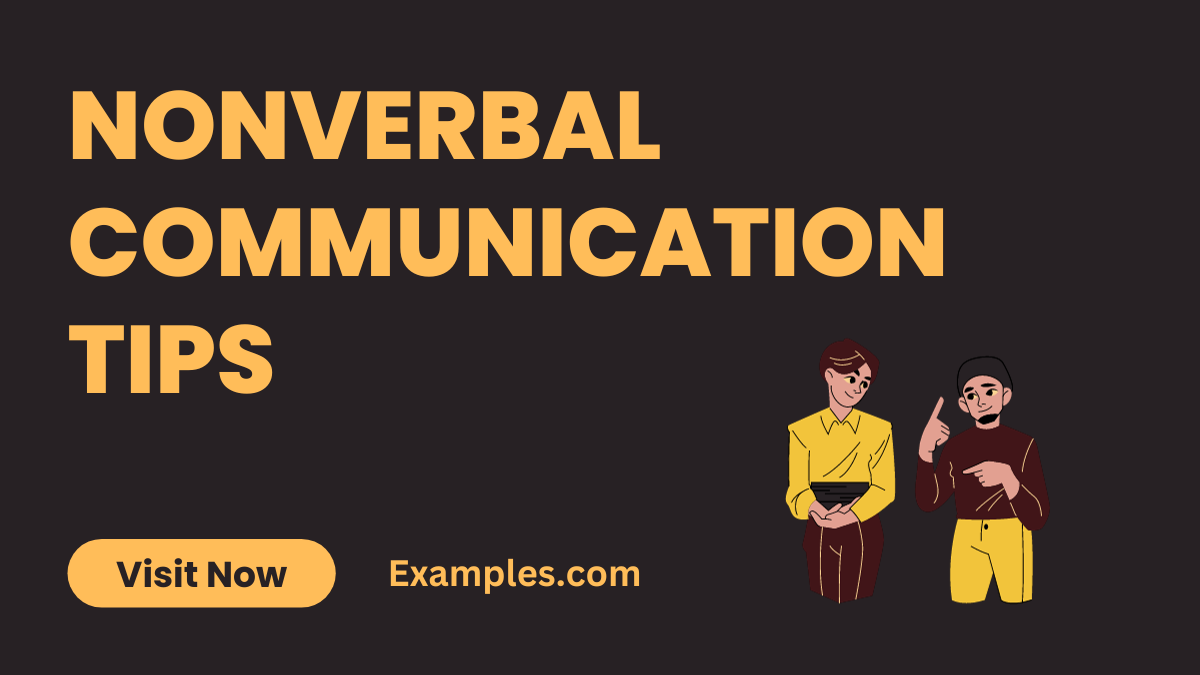Nonverbal Communication Tips

Improving your nonverbal communication skills can enhance your ability to convey messages effectively and understand others more accurately. Here are some tips to help you enhance your nonverbal communication:
-
Maintain Eye Contact:
- Establish and maintain appropriate eye contact during conversations. It conveys interest, attentiveness, and sincerity.
-
Use Facial Expressions Mindfully:
- Be aware of your facial expressions, ensuring they align with the emotions or messages you want to convey.
-
Be Mindful of Body Language:
- Pay attention to your posture, gestures, and movements. Stand or sit with an open and confident posture to project engagement and openness.
-
Gesture Appropriately:
- Use gestures to emphasize points or provide additional context to your verbal communication. Avoid excessive or distracting gestures.
-
Be Attentive to Proximity:
- Respect personal space and adjust your proximity to others based on cultural norms and individual comfort levels.
-
Monitor Your Tone of Voice:
- Be mindful of your tone, pitch, and volume. A well-modulated and expressive voice can enhance the impact of your verbal communication.
-
Use Mirroring and Matching:
- Subtly mirror or match the body language of the person you are interacting with. This can create a sense of rapport and connection.
-
Be Conscious of Touch:
- Use appropriate and culturally sensitive touch when necessary. Handshakes, pats on the back, or other gestures can convey warmth and connection.
-
Dress Appropriately:
- Consider the context and dress in a way that is appropriate for the situation. Your appearance can contribute to the overall impression you make.
-
Be Aware of Cultural Differences:
- Recognize that nonverbal cues may be interpreted differently in various cultures. Be open to learning about and respecting cultural norms.
-
Practice Active Listening:
- Demonstrate your engagement by nodding, using facial expressions, and responding appropriately. This shows that you are actively involved in the conversation.
-
Be Mindful of Silence:
- Understand the role of silence in communication. Sometimes, allowing for pauses can emphasize points or provide others with the opportunity to express themselves.
-
Adapt to the Context:
- Adjust your nonverbal communication based on the context, whether it's a professional setting, social gathering, or personal conversation.
-
Develop Self-Awareness:
- Reflect on your own nonverbal communication habits and be open to feedback. Developing self-awareness can help you identify areas for improvement.
-
Seek Feedback:
- Ask for feedback from trusted colleagues, friends, or mentors about your nonverbal communication. They may offer insights and suggestions for improvement.
By incorporating these tips into your communication style, you can become more effective in conveying messages, building relationships, and navigating social interactions. Remember that nonverbal cues work in conjunction with verbal communication, and mastering both aspects can lead to more successful communication overall.
Thank you.
